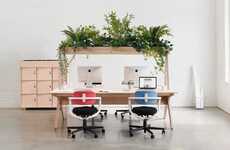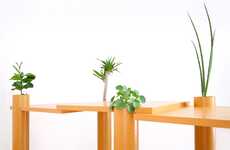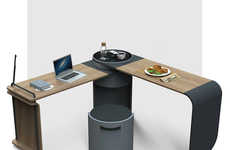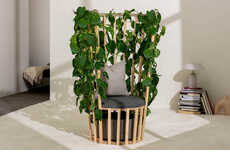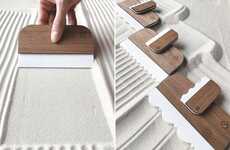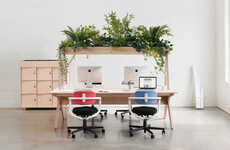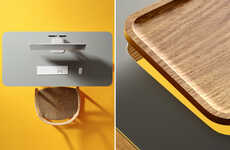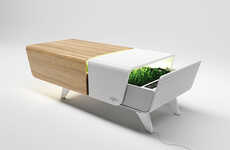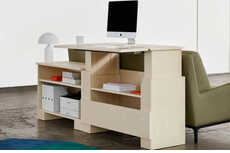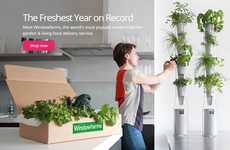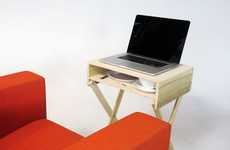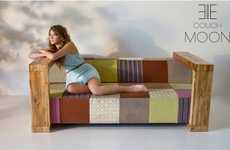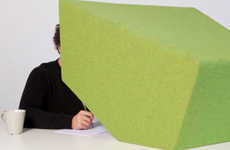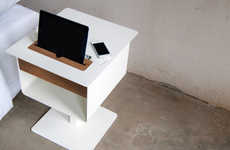
Love Hulten's Senescent Desk Changes Over Time
Meghan Young — January 7, 2012 — Eco
References: lovehulten & design-milk
Nothing will seem like work when toiling away at the Senescent Desk. The mini, lush garden that is built-in on the back portion of the table top creates a serene ambiance that would calm even the most stressed-out person. It might not be a zen garden, but it might as well be.
Created by Gothenburg, Sweden-based designer Love Hulten, the Senescent Desk is a self-sufficient gardening system that features a water-tank, mist makers, two fans, digital clock and, most importantly, a growth substrate material made from recycled plastic. The Senescent Desk requires no human interaction in order to flourish.
The truly interesting aspect about the Senescent Desk, however, is how it is designed to change over time. Hulten uses untreated wood so that it would react more strongly to its environment.
Created by Gothenburg, Sweden-based designer Love Hulten, the Senescent Desk is a self-sufficient gardening system that features a water-tank, mist makers, two fans, digital clock and, most importantly, a growth substrate material made from recycled plastic. The Senescent Desk requires no human interaction in order to flourish.
The truly interesting aspect about the Senescent Desk, however, is how it is designed to change over time. Hulten uses untreated wood so that it would react more strongly to its environment.
Trend Themes
1. Built-in Garden Furniture - The trend of incorporating greenery into furniture designs provides an opportunity for designers to create unique and calming spaces.
2. Self-sufficient Gardening Systems - The rise of self-sufficient gardening systems allows for innovative designs that require minimal human intervention.
3. Environmentally-conscious Materials - The use of recycled plastic and untreated wood in furniture design caters to the growing demand for sustainable and eco-friendly products.
Industry Implications
1. Furniture Manufacturing - The furniture manufacturing industry can explore incorporating built-in gardens as a selling point for their products.
2. Interior Design - Interior designers can leverage self-sufficient gardening systems to create unique and sustainable living and working spaces.
3. Sustainable Materials Production - The production of recycled plastic and untreated wood materials presents an opportunity for the sustainable materials industry to cater to the demand from furniture designers.
3.8
Score
Popularity
Activity
Freshness

